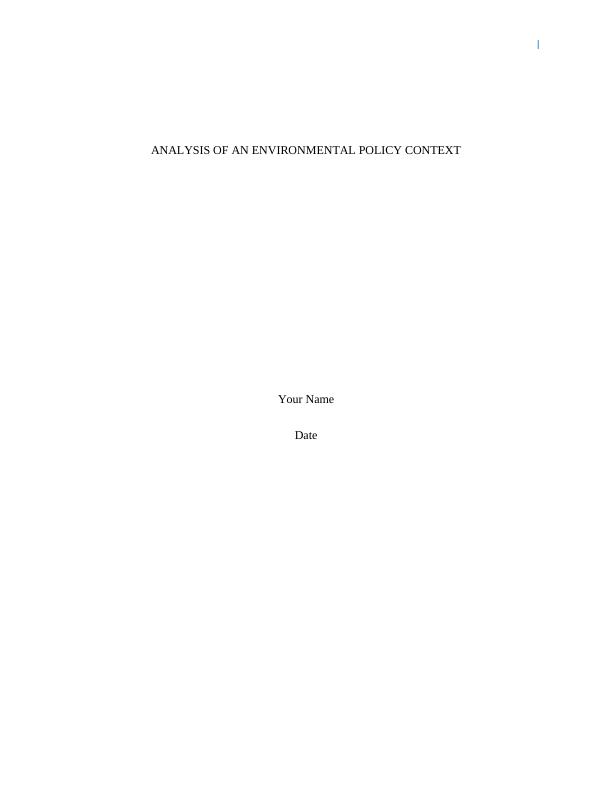Analysis of an Environmental Policy Context
Prepare a written background analysis of the environmental policy context for an assigned environmental issue.
10 Pages2314 Words76 Views
Added on 2023-01-13
About This Document
This document provides an analysis of an environmental policy context, focusing on the Great Barrier Reef Marine Park Act. It discusses the impacts of environmental policies on areas such as water, land, and food, and highlights the need for sustainable development and pollution control. The document also explores the challenges faced in managing the Great Barrier Reef and the various programs and initiatives aimed at its protection.
Analysis of an Environmental Policy Context
Prepare a written background analysis of the environmental policy context for an assigned environmental issue.
Added on 2023-01-13
ShareRelated Documents
End of preview
Want to access all the pages? Upload your documents or become a member.
Sustainability Strategy Analysis for Great Barrier Reef
|7
|1858
|166
Application For Sustainable Tourism Funding
|7
|1935
|147
Tourism Planning and Environment: The Great Barrier Reef
|19
|4593
|51
Business Communication Skills : PDF
|12
|2744
|92
Environmental Impacts on the Great Barrier Reef
|3
|1468
|497
HC1082 - Environmental Effect on Great Barrier Reef and Its Economic Impact
|8
|1522
|72



